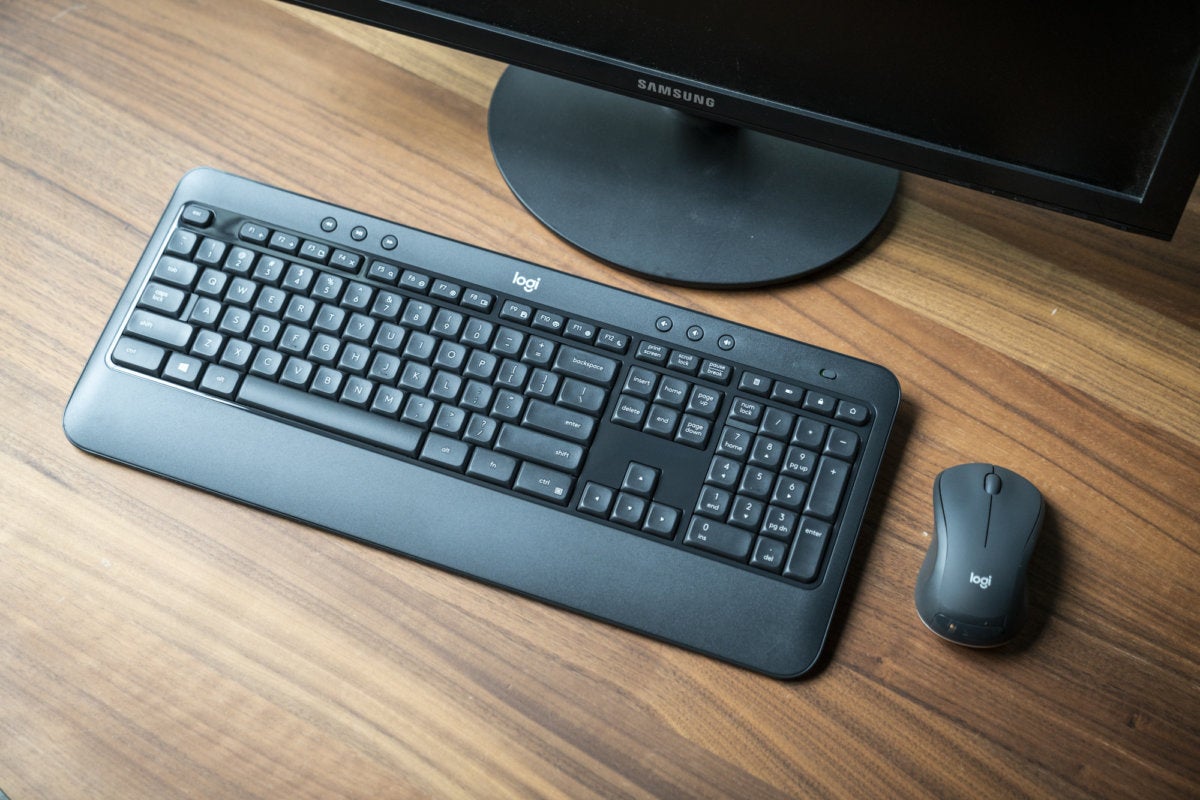There’s no cable, but it requires dongles, batteries and more.
Adam Patrick Murray/IDG
Today’s Best Tech Deals
Picked by PCWorld’s Editors
Top Deals On Great Products
Picked by Techconnect’s Editors
Show More
You’re sick and tired of tripping over your USB keyboard’s cable and have decided it’s time to go wireless. Besides losing that annoying cable, a wireless keyboard also gives you the freedom to work farther away from your computer, or get some relief from your laptop’s cramped layout.
We review wireless keyboards and are ready to help. Before you shop, here are some critical features you never had to think about with a wired keyboard, but you need to know now.
Form factor: Full-sized or portable?
For wireless keyboards that stay on a desk or your lap all day, a standard-size model that looks just like a wired keyboard, but without the wire, will do in most cases.
Our favorite is the Logitech K800, which offers the bonus feature of illuminated keys for low-light conditions. The Logitech MK540 is a suprisingly good budget option that includes a mouse.
One of the benefits of going wireless, however, is to have a keyboard small enough to be tucked into your bag for your commute or business trip, and nimble enough to connect to other devices besides your PC (more on that below). These smaller, flatter keyboards tend to sacrifice typing comfort for portability, so don’t expect to bang out a long blog post.
One of our all-time favorites strikes a good balance: The Logitech K780 offers a solid typing experience in a compact, reasonably light design.
Connectivity: Bluetooth vs. USB dongle
 IDG / Hayden Dingman
IDG / Hayden DingmanKeyboards that feature both Bluetooth and wireless USB dongles let you switch between the more reliable USB for your PC to use with your phone or tablet.
Today’s wireless keyboards connnect via Bluetooth, USB dongle, or both. Bluetooth’s strength is you can easily connect it to multiple devices. Many Bluetooth keyboards today support multiple devices, so you can use it on your laptop, phone, or tablet without having to re-pair constantly.
Bluetooth’s main weakness is occasional flakiness. If you’ve ever found your Bluetooth headset or speaker suddenly not connecting to your phone, you know what we mean. It’s generally not an issue but when it arises, it’ll drive you mad.
We tend to find wireless keyboards that use dedicated USB dongles to be more reliable most of the time. The keyboards typically come pre-paired to a tiny thumbnail-sized USB adapter that slips into an available USB-A port on the computer.
The main downside to USB wireless dongles is losing them, which happens more often than you’d think. Many new laptops today also offer only one USB-A port, or none, which means you’ll have to start juggling—or buy a hub to expand your ports. (PCWorld reviews USB-C hubs for just such purposes.)
The best of both worlds are keyboards that accommodate both Bluetooth and USB. While typically pricier, they’re a great choice for those who use multiple devices and want the stability of a USB dongle, too.
Power: Rechargeable vs. Battery
 IDG / Hayden Dingman
IDG / Hayden DingmanKeyboards that run off of alkaline batteries, like this Logitech G613, offer long life, are are easy to replace, but does pose the risk of damaging the keyboard should the battery corrode.
Wireless keyboards need their own power source. The two most common choices are rechargeable and battery-powered.
Most lower-cost wireless keyboards use AA or AAA alkaline batteries. They typically last months or even years before needing replacement, and they’re readily available. Their weakness is dying when you least expect it—and stores are closed. Alkaline batteries also run a slight risk of corrosion, which could damage the keyboard.
Rechargeable wireless keyboards tend to be higher-end models, as features such as RGB backlighting exceed the power capabilities of alkaline batteries. The obvious plus is you can get your fancy RGB and go wireless. There’s also no need to buy batteries, and you can normally charge the keyboard while you work. In the long term, the big minus is that most keyboards’ rechargeable batteries are non-serviceable. That means if the battery goes kaput, you’ll have to buy a new keyboard.
Looking for a wireless gaming keyboard?
One final option to consider is whether you need or want a “gaming-grade” wireless keyboard. Yes, it’s really a thing. Gaming-grade wireless keyboards offer lower latency over their USB or Bluetooth connections, drastically cutting the delay between when you push a button and when the computer receives it.
For the average person who isn’t gaming competitively, a standard keyboard should be fine. For someone who does play a very fast-paced game where the twitch of the mouse and keyboard at 300 fps is a win or loss—then yes, you should buy a gamer-grade wireless keyboard.
One personal favorite is Logitech’s G613 with Lightspeed technology. It claims as low as 1ms response time, which is as good as you’d get from a wired gaming keyboard. Our favorite tested model is Corsair’s K63, which uses real Cherry MX switches—and if you know what those are, you probably just got a little more interested in this model.
While these wireless gaming keyboards are truly the equivalent of corded keyboards, we do want to give you the warning that buying your favorite basketball player’s sneakers doesn’t make you a better basketball player. No matter what the advertising hype promises, no keyboard can help you frag more bots.
Another important note: Most gaming-grade keyboards with RGB tend to have pretty poor battery life compared to standard wireless keyboards. Think in days or even hours of use, rather than months or years for a standard model.
Note: When you purchase something after clicking links in our articles, we may earn a small commission. Read our affiliate link policy for more details.
One of founding fathers of hardcore tech reporting, Gordon has been covering PCs and components since 1998.


